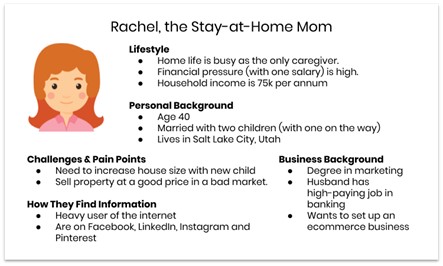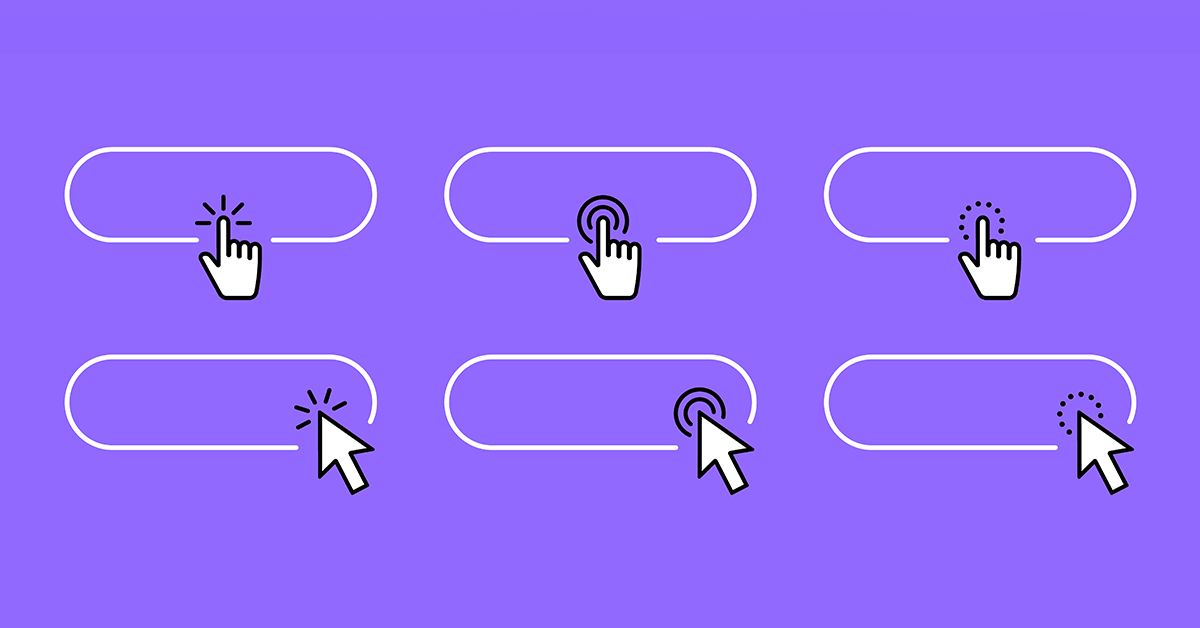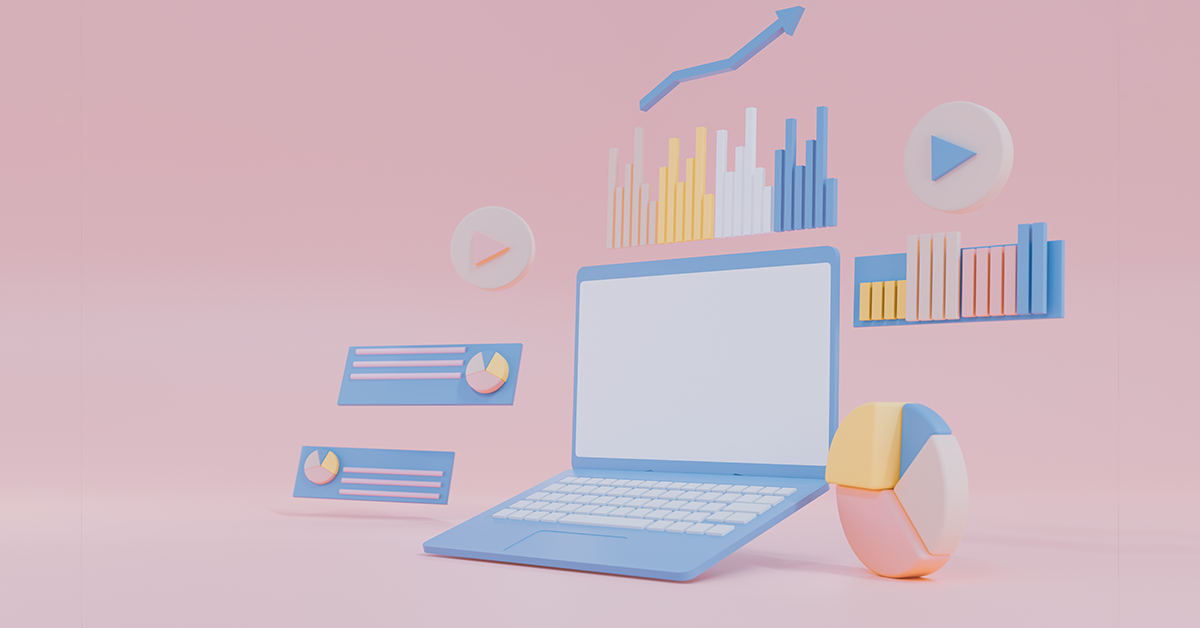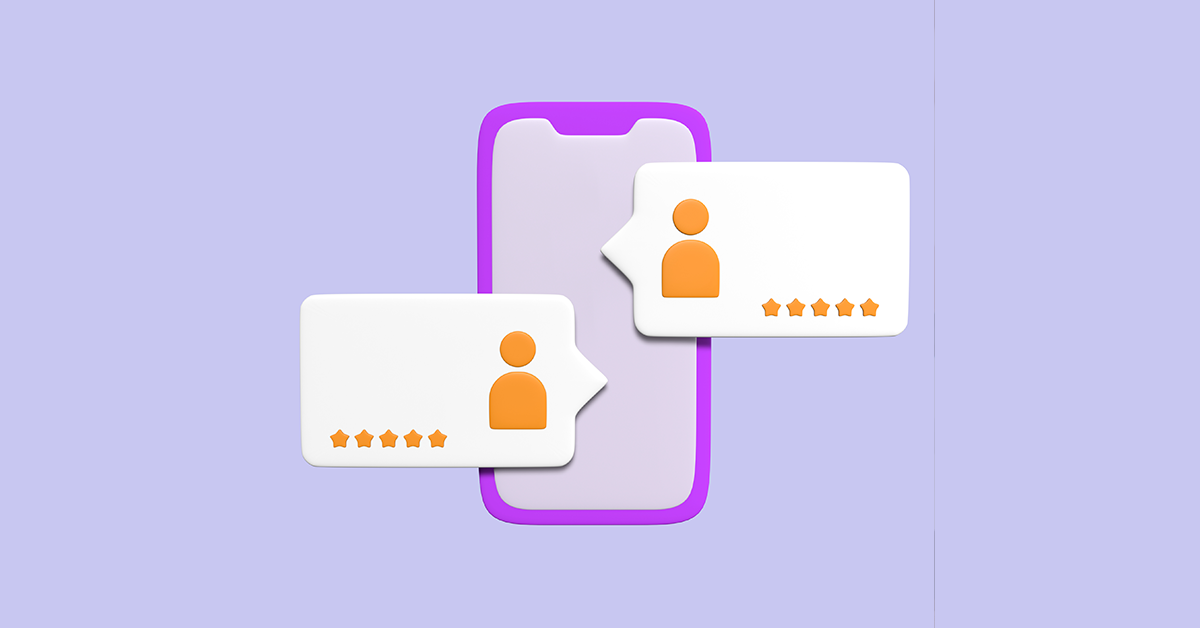If you’re looking to define and connect with your audience buyer personas are a good place to start. LOCALiQ have put together this comprehensive guide and a free template to show you how to create your own buyer personas to personalise content to your target audience, and subsequently drive more sales.
In this guide we’ll cover the following:
- What is a buyer persona?
- Buyer persona definition.
- Why are buyer personas important?
- What should a buyer persona include?
- Buyer persona examples.
- How to create a buyer persona for your business.
- Free persona template.
Buyer Persona Template
Create the perfect buyer persona with our free, editable template.
What is a buyer persona?
A buyer persona, also referred to as marketing or customer persona or profile, helps businesses understand their target market to provide a tailored and personalised experience to best meet their customer’s needs and acquire business from them.
Buyer persona definition:
“A buyer persona is a semi-fictional representation of your ideal customer based on market research and real data about your existing customers.” – Hubspot
Essentially a buyer persona is a visual characterisation of your business’s real buyers, clients, or customers presented within a single profile. Creating buyer personas enables you to cater your marketing efforts and connect with your target market to meet their needs and solve their problems.
It is common to have more than one buyer persona because every individual will have different criteria when evaluating your product or services, meaning you will need to implement a variety of marketing strategies to meet individual needs. You shouldn’t represent your entire customer base using one buyer persona, and neither should you create a persona based on one single, existing customer. According to Mark Schaefers’ study, three to four buyer personas usually account for over 90% of a company’s sales.
Why are buyer personas important?
Buyer personas are an essential part of all marketing strategies. They allow you to focus on the needs, challenges, and pain points of your customers, providing you with a wealth of marketing power to target the right people at the right time, with the right content. Without buyer personas, how do you know what content to create? Or how to direct your marketing efforts to enhance your presence?
Aligning your marketing strategy to better suit customers’ needs will not only enhance the customer experience and deliver a more tailored campaign but can also help to understand whether your products fulfil the buyer’s needs sufficiently.
Once you understand what motivates your target audience, you can easily address your customer’s needs and answer their questions within your marketing materials. Creating buyer personas, and frequently using them to inform your business decisions, can help you keep a customer-centric approach and ensure you are meeting your buyers’ needs. Furthermore, having concise but detailed personas profiles will help you segment your customers enabling you to deliver specific and strategic targeted messaging.
What should a buyer persona include?
During this age of information overload, you need to pay attention to details and be specific, this applies when developing buyer profiles. The more personalised and precise you can be, the easier it is to engage with your target audience and break through the excess of information online.
When creating your buyer personas, you should include:
- Demographic data (e.g., age, gender, income, employment, etc.)
- Behaviours (e.g., What conversion paths do your ideal customers take? What social media platforms do they most frequently use? How and where do they interact with your marketing materials in the funnel?)
- Interests (e.g., blogging, traveling, marketing, shopping, sports etc.)
- Challenges (e.g., using social media, finding ways to increase website traffic, understanding how to enhance search engine optimisation etc.)
- Motivations (e.g., industry recognition, social responsibility, pricing incentives etc.)
- Objectives/Goals (e.g., price comparison, informational inquiry, direct purchase etc.)
Take a look at this blog to understand how these qualities individually fit into real-life buyer personas.
Buyer persona examples.
Content Marketing Institute (CMI) suggests making buyer personas visual by adding images and giving each persona a name to help people relate to their profiles. These personas will help you remember that not all audiences are alike, and each persona can be affected by changes, which impact the journey and content you deliver to them.
Here are a few examples of buyer personas profiles:
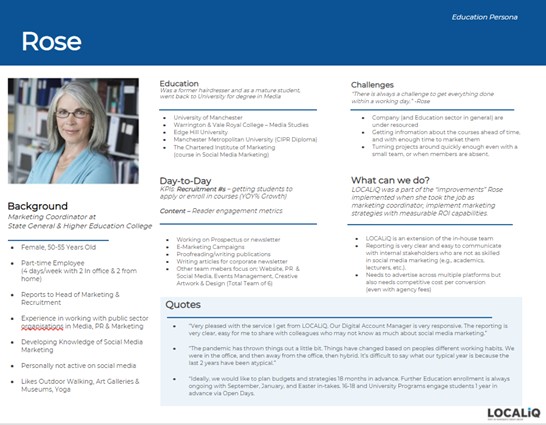
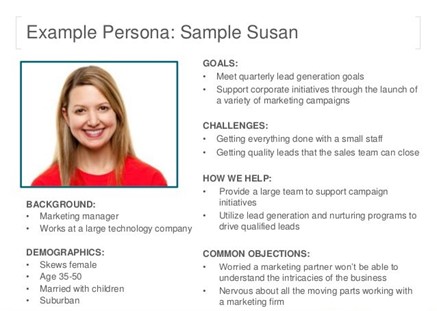
How to create a buyer persona for your business.
Step 1: Do research
The first thing you must do when creating a persona profile is to conduct research to gather information about your customer base. Without research, the goals, needs, and challenges of your persona will be based on imaginary customers, not real ones which won’t be beneficial when developing ideas for people who actually use your product or service.
The best personas are created from real-life data such as surveys and interviews, not from guesses or assumptions. The more thorough you are with research, and the more detailed the persona profiles, the better!
The questions you want to be asking are ones that will help you outline who your ideal buyers are, such as:
- How old they are? What is the typical age range?
- What’s their education level and qualifications?
- Where do they live? What is their geographical location?
- What is their job title?
- What is their financial status and income?
- What activities and interests do they like to pursue?
- What are their aspirations and motivations?
- What industry they are in? How long they’ve been in that industry?
- What would they change about their work or industry if they could?
- What are the challenges they face on a day-to-day basis?
- What publications do they read? What social media platforms do they use?
- Where do they go for news about their industry?
Don’t feel alone when it comes to researching your customer base, here are some useful tools you can use to research your existing customers and website visitors.
Useful research tools:
– Google Analytics or Woopra: help you track the traffic sources of your visitors to determine how people are finding you, where they’re coming from, and what the average buyer journey is.
– CrazyEgg or Inspectlet: enable you understand how your website visitors interact with your website or software, providing you with valuable insight into the type of user who buys and where people bounce.
There are also many sources you can use to gather information about your customers. These include your business’s internal teams, namely sales and customer support departments, as well as your customers/clients themselves!
Sales and support teams
It is a good idea to collaborate with your sales and support teams, as they will help you define who your existing customers are. Your sales team will have a good understanding of who your clients are, and will be able to provide you with demographic details, pain points, and primary objectives for your buyer persona profiles which should be used to inform your marketing strategy.
Here are 5 questions to ask your sales and support teams when creating a buyer persona:
1. What are our client’s most frequently asked questions and queries?
2. What is the most common job role held by the people you speak to? And what are the common roles held by the decision-makers?
3. What is the primary challenge or pain point customers address when on a call with you?
4. If someone has an issue with our tool, service, or product, is there a recurring characteristic of that person?
5. What are the characteristics of businesses that are successful and happy with our product/service? Which are the characteristics of businesses that cancel or have issues?
Customers
Your customers are another invaluable source for defining your ideal buyer persona. You can communicate with your customers using surveys, interviews, phone calls, and questionnaires to gain insight and perspective.
The most effective way to develop buyer personas is to interview buyers who have made a decision similar to the one you want to influence. Interviews encourage your buyers to tell you their accounts of how they progressed through the buyer journey. Try setting up calls to interview a mixture of your most successful and long-serving customers, as well as some unsuccessful customers so you can gauge what works well and what doesn’t.
If you don’t have the resources or the time to conduct interviews, sending an email linking to a pre-built form, survey, or questionnaire will suffice. Here are a few free online survey and questionnaire services that you can use; SurveyMonkey, SurveyMoz and FluidSurveys.
5 Questions to ask your customers:
1. Tell us a bit about yourself and your business?
2. How do you measure success?
3. Why did you choose our product/tool/service over competitors?
4. Is there anything we don’t offer that you wish we did?
5. What would make you switch to another provider?
Remember: If you are concerned about low response rates, you can always incentivise your customers to participate by offering a gift card, freebie, or another incentive.
Step 2: Segment your audience
Once you have collected data on your existing client/customer base you can begin segmenting them into separate personas. Market segmentation refers to aggregating prospective buyers into groups with common needs and who respond similarly to a marketing action. Conducting market segmentation breaks down the main groups of your target audience into customer subgroups which each have a set of traits or characteristics that unite them.
The first thing you need to do to successfully segment your customers is to analyse your research data to identify groups with similar characteristics, needs, behaviours, and goals. The lifecycle stage is a great starting point for segmenting your audience. Lifecycle stage signifies where in the buying process an individual currently is. How you communicate with different contacts should be largely dependent on the stage they are at in the buyer journey.
You can use different scales, such as the one below, to help identify demographic and behavioural patterns and trends. These scales can be incorporated directly into your surveys and questionnaires to save you from having to extract the information yourself.
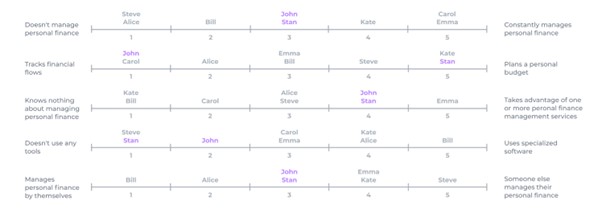
Image source
Looking at the scales above, you’ll see that some people (e.g., John and Stan) appear around the same or similar places thereby constituting a pattern, laying a foundation for a future persona.
Step 3: Collate the data into profiles
Once you’ve done your research and segmented your audience, you’ll want to collate the data into different persona profiles.
Free persona template
Once you have conducted your research and segmented your customers into groups, you’ll be ready to create your first persona. To get you started right away we have built a free persona template for you to quickly download.
Buyer Persona Template
Create the perfect buyer persona with our free, editable template.
You now have all the materials and knowledge you need to start developing your buyer personas and creating personalised content for your audience and generating high-quality leads. Remember, buyer personas aren’t static documents, meaning you should be continuously reviewing and updating them as you learn more about your customers and integrate new insights.
I hope this blog has helped shed some light on how you can start effectively developing buyer personas for your business.
Want to speak to one of our experts? Get in touch today.


